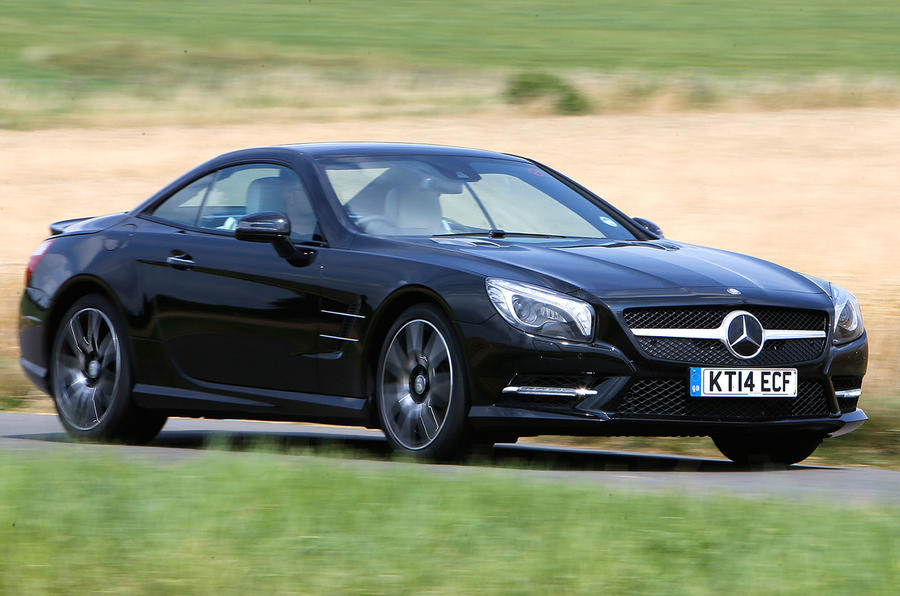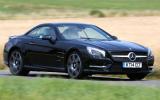Fairly fast. You’d bet that in-gear performance is even more greatly transformed than that 0-62mph improvement would suggest.
Response from the pair of turbochargers is good, and the accessible swell of acceleration they create suits the swift, relaxed ground covering that SLs are built to do very well.
The new engine also works better with Mercedes’ 7G-tronic automatic gearbox than the old V6 ever did, the former still slower and more unwilling to kickdown than competitors’ transmissions.
In outright terms the SL 400 is brisk enough to pick off everyday traffic effortlessly and certainly feels athletic. It isn’t quite as quick as the hotter six-cylinder versions of the Porsche 911 or Jaguar F-Type, but you’d imagine SL owners won’t care.
But, while performance is now where it should be for the bottom-rung version of Stuttgart’s blue-blooded roadster, other facets of the driving experience still need improvement.
The first is mechanical refinement: a shortcoming you don’t expect to find in such a smooth operator as the SL. The forced V6 is ever-so-slightly thrashy and grumbly at idle, booms a little bit under load and sends just-noticeable vibrations into the cabin through parts of the rev range.
The engine offers respectable economy – 30mpg in mixed use – but where the turbo V8 in the SL 500 can top twenty-six to the gallon in similar circumstances, that’d seem a poor reason to opt for the smaller engine.
Ride and handling in the SL remains fairly unashamedly biased towards the former, largely at the expense of brilliance at the latter. The SL has a light electromechanical steering setup configured for untroubling ease-of-use rather than involvement or feel.
Fitted with the optional hydraulic Active Body Control suspension of our test car, high-speed motorway ride is excellent. The fast back-road ride is good, but feels slightly wooden on occasion.
The continually adjusting chassis rates can also filter changeable weight and directional response into the car’s steering, which can make the car tricky to guide through a fast bend. Handling is quite direct and well-balanced, but could feel more natural. Body roll is almost entirely dialled out, but off-centre lateral grip and pace in the steering sometimes comes as a surprise.









Join the debate
Add your comment
SO MUCH FOR THE S500L PHEV?
Incidentally the preceding 3.5 litre 60 degree V6 was not that 'aged', and ITS predecessor was an earlier 90 degree V6 whose smoothness Mercedes were fond of showing off by balancing a coin on it.
Agree with voyager12
Strangely enough...